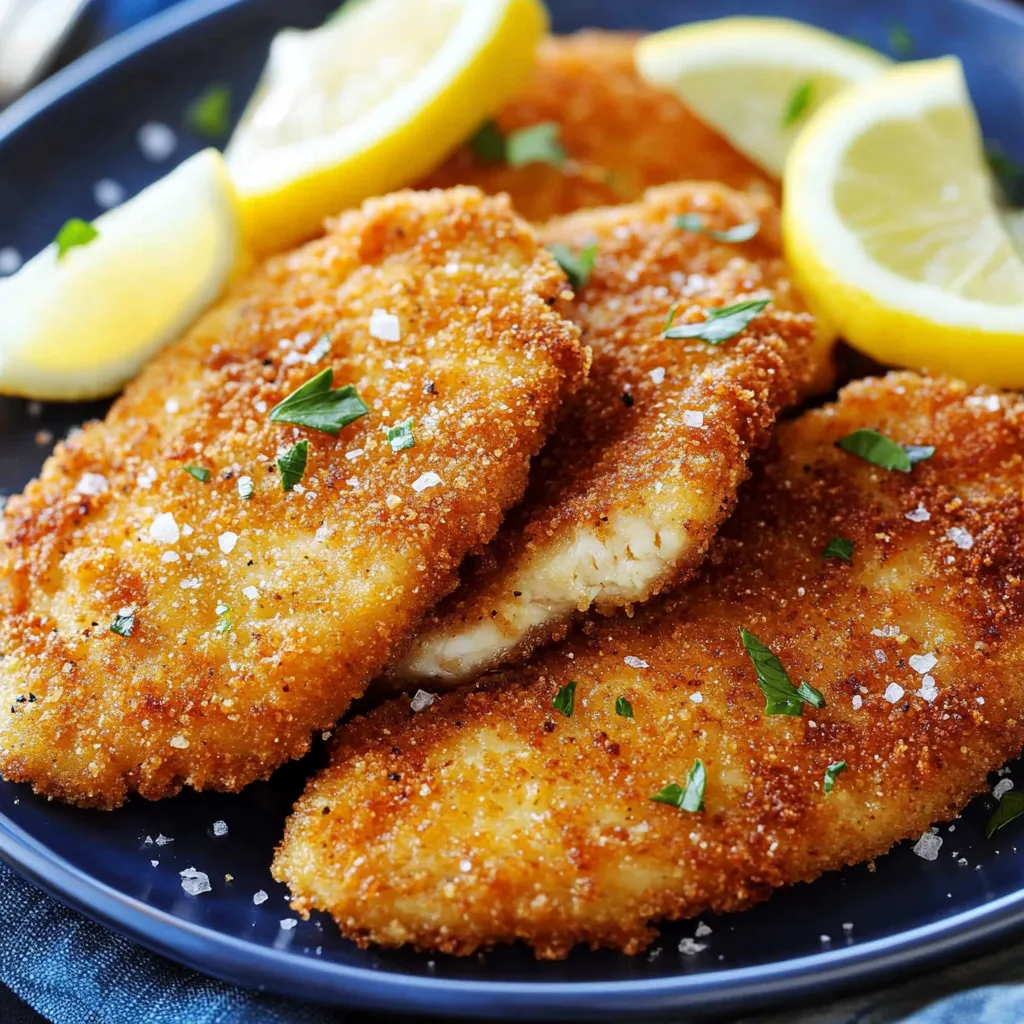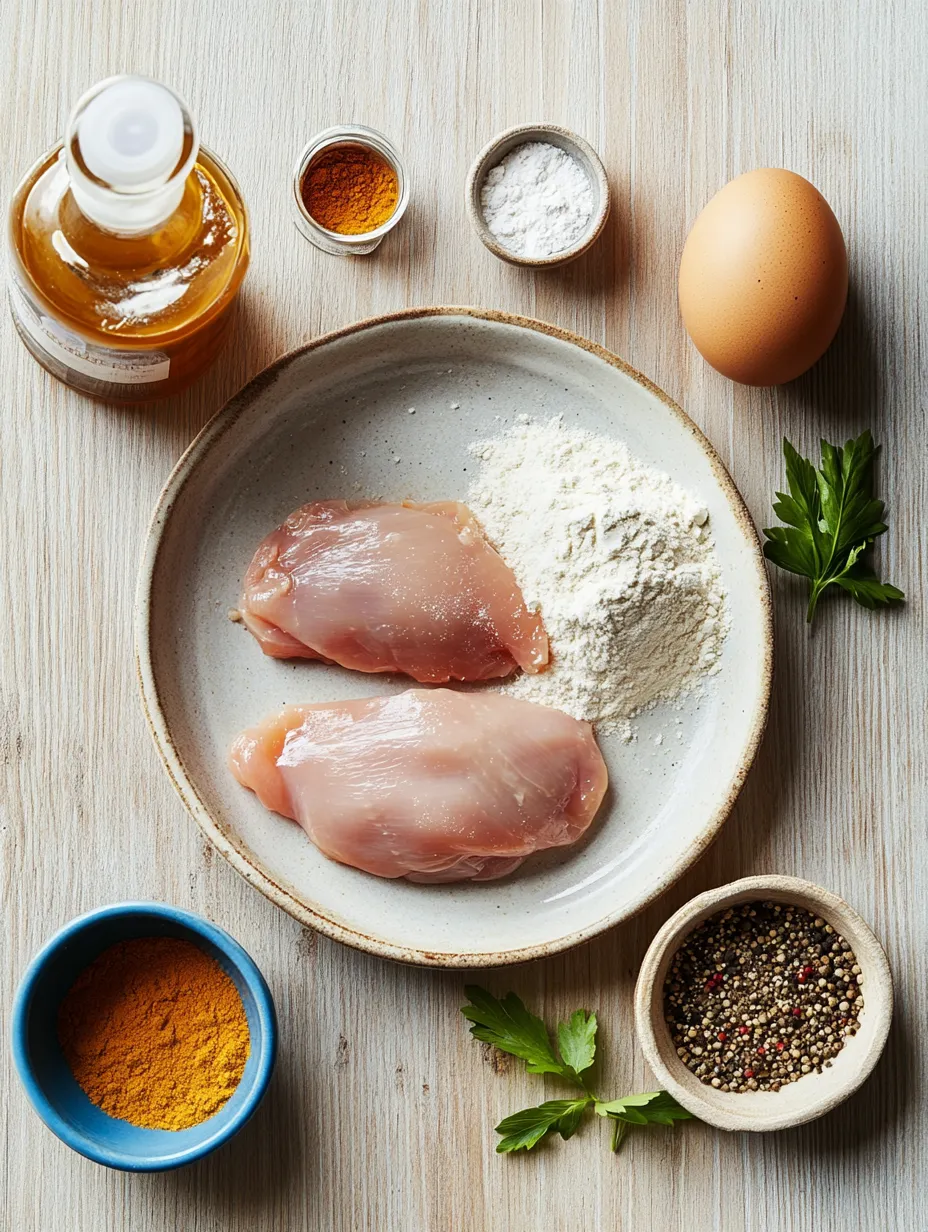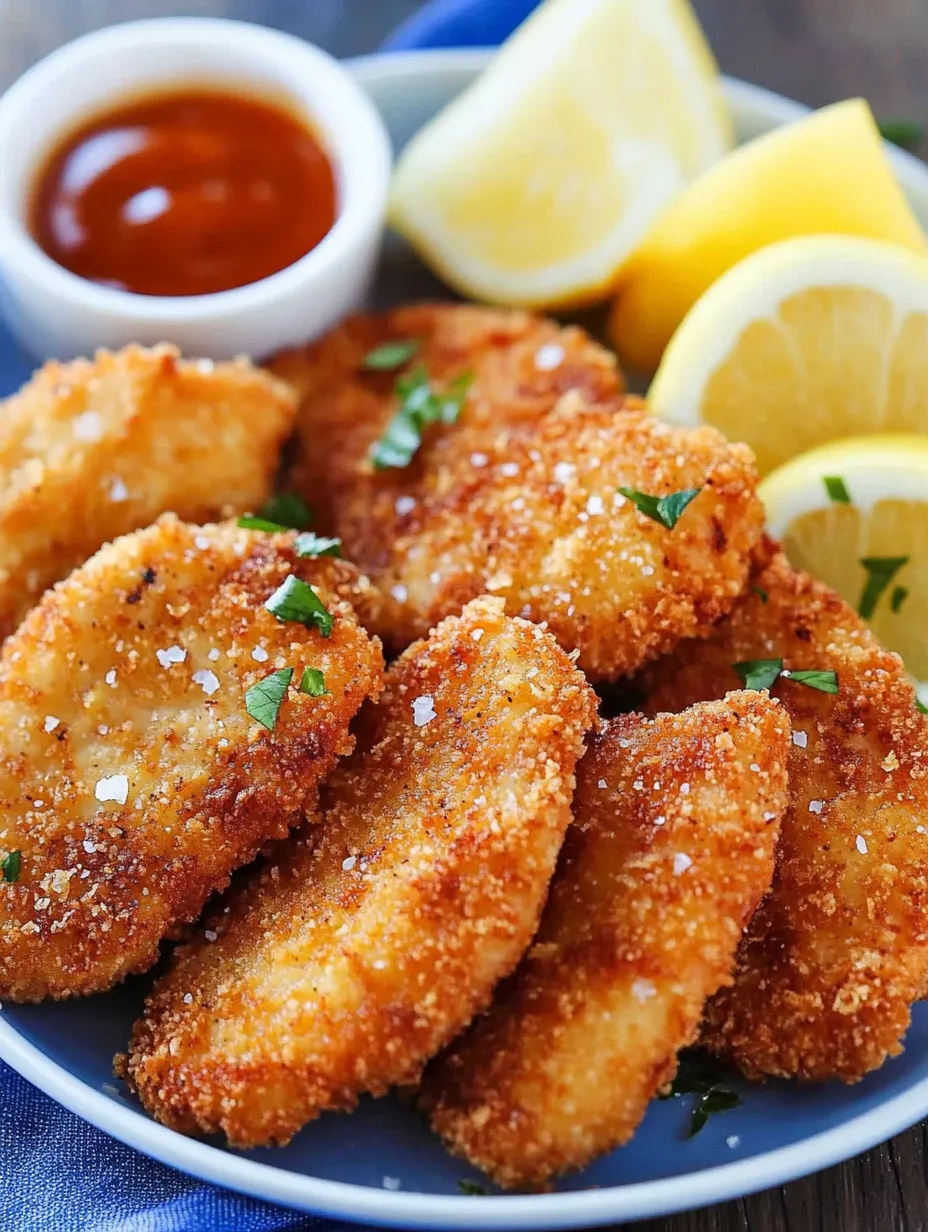 Pin it
Pin it
The perfect Chicken Schnitzel delivers that irresistible contrast between a golden, crispy crust and tender, juicy meat inside. This simple yet elegant dish has become a regular in my kitchen rotation after perfecting the technique of creating that signature thin cutlet with the ideal breadcrumb coating. Through countless batches, I've discovered that the secret lies in proper pounding and precise temperature control during frying.
Yesterday, I served this to dinner guests who couldn't believe how tender the chicken remained despite being so thin. The key was pounding it evenly and not overcooking.
Essential Ingredients and Selection Tips
- Chicken Breasts: Choose evenly sized pieces for consistent cooking
- Panko Breadcrumbs: These Japanese-style breadcrumbs create the signature extra-crispy coating
- Oil: Use a neutral oil with a high smoke point like vegetable or canola
- Fresh Lemon: Don't skip this; the acidity balances the richness perfectly
- Paprika: Adds subtle color and flavor to the coating
 Pin it
Pin it
Detailed Cooking Instructions
1. Perfect the Pounding Technique
- Step 1:
- Place chicken between plastic wrap to prevent tearing
- Step 2:
- Use the flat side of a meat mallet for even pressure
- Step 3:
- Work from center outward in gentle, even strokes
- Step 4:
- Aim for uniform thickness throughout
2. Master the Breading Process
- Step 1:
- Keep one hand for dry ingredients, one for wet to avoid "breading fingers"
- Step 2:
- Press breadcrumbs firmly into chicken for better adhesion
- Step 3:
- Rest breaded chicken briefly for coating to set
3. Achieve the Golden Crust
- Step 1:
- Heat oil until shimmering but not smoking
- Step 2:
- Test with a few breadcrumbs - they should sizzle immediately
- Step 3:
- Don't crowd the pan - leave space between pieces
- Step 4:
- Adjust heat as needed to maintain steady temperature
My grandmother taught me to add a pinch of salt to the breadcrumbs as well as sprinkling it on afterward - a small detail that makes a noticeable difference in flavor distribution.
Temperature Management
Maintaining proper oil temperature is perhaps the most crucial element. I've found that medium heat works best, adjusting slightly as needed throughout cooking.
Serving Strategy
While traditional accompaniments include potatoes and a simple salad, I love serving schnitzel with a quick lemon-caper sauce drizzled over the top and roasted vegetables on the side.
Make-Ahead Tips
You can bread the chicken several hours ahead and refrigerate on a wire rack. This actually helps the coating adhere better when cooking.
 Pin it
Pin it
Final Thoughts: This Chicken Schnitzel recipe represents comfort food at its finest - simple ingredients transformed through technique into something truly special. The satisfaction of hearing that first crispy bite followed by tender chicken makes all the difference in a memorable meal. Whether served for a weeknight dinner or special occasion, it never fails to impress.
Frequently Asked Questions
- → What's the difference between chicken schnitzel and chicken cutlets?
- Schnitzel refers specifically to meat that's been pounded thin, breaded, and fried. Chicken cutlets can be prepared various ways, but when breaded and fried, they become schnitzel.
- → Why do you need to pound the chicken breast?
- Pounding creates even thickness for uniform cooking, tenderizes the meat, and gives schnitzel its characteristic thin, large shape.
- → Can I make this ahead of time?
- While best served immediately after frying, you can bread the chicken up to 24 hours ahead and refrigerate until ready to fry.
- → What can I serve with chicken schnitzel?
- Traditional sides include German potato salad, cucumber salad, spaetzle, or a simple green salad. Lingonberry jam or cranberry sauce also pair well.
- → Can I use regular breadcrumbs instead of panko?
- Yes, though panko creates a lighter, crispier texture. Regular breadcrumbs will work but create a denser coating.
